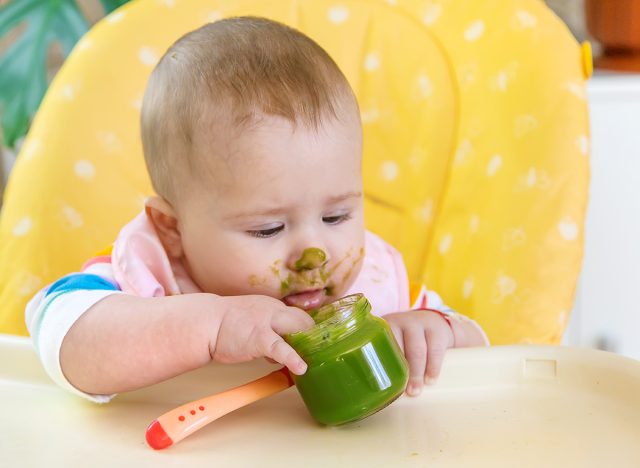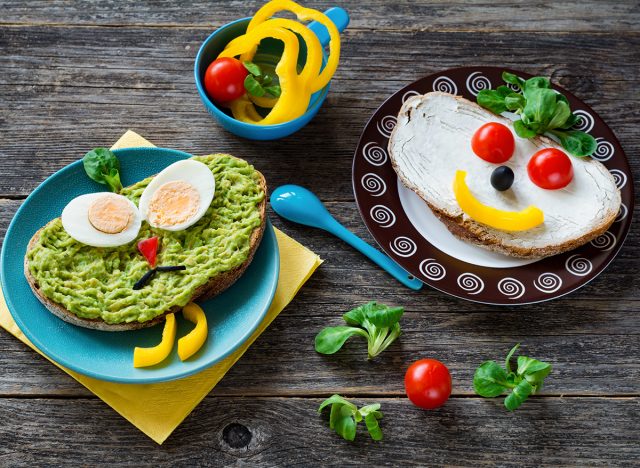Getting your kids to try new foods can be a daunting task, especially if they are picky eaters. The hardest part is trying to introduce your kids to nutritious foods that will help them grow, such as vegetables. Of course, kids don't understand why they need to eat their vegetables. They just see a green, leafy thing on their plate and assume the worst—that it will taste awful.
"Any time a parent asks me about getting their kid to eat more vegetables, I share this story about my childhood," says Jessica Sylvester, MS, RD, LDN, CNSC, CDCES, clinical dietitian, media spokesperson for the Academy of Nutrition and Dietetics, and owner of Florida Nutrition Group. "My parents took us out for Chinese food a lot. Up until I was about 12 years old, I ordered the same dish each time: plain lo mein without protein or vegetables—just fried oil noodles, and I would slather it in duck sauce. My parents never said a word to me about it."
Sylvester suspects that—like most parents—hers were perhaps too tired to contest her choice at the time. However, today she is clearly whistling a different tune as a dietitian who loves vegetables.
"But you know who doesn't? My kids, ages 3 and 5," she says.
Parents and guardians of kids who don't naturally enjoy the taste of vegetables will likely get creative when attempting to incorporate a veggie or two into their dishes. They may even resort to hiding them in meals to conceal their flavor or usual appearance.
"If sneaking vegetables into foods works, do it," suggests Sylvester. "But, keep in mind that kids are more likely to eat foods that are familiar to them."
What Sylvester means is that kids typically have to see what they are eating in order to get used to it. In the case of veggies, they have to see their parents and friends eating them, smell them, and sometimes even have to play with them before being willing to eat them. The trick here boils down to repetition and frequency; the more often your children can have these sensorial experiences with food, the more accustomed they will become—which could mean less drama at the dinner table for you.
If you're stuck between a rock and a hard place on what methods to use to introduce your kids to vegetables, take a look at some of Sylvester's recommendations. Read on, and for more, don't miss 9 Healthy Snacks To Pack in Your Kids School Lunches (That You'll Want to Eat Too).

"As infants, make sure to give them a variety of pureed foods, so that their palates are introduced to the taste of different vegetables," Sylvester suggests.
One great way Sylvester recommends introducing your kids to vegetables is to use blended food pouches. Because some blended pouches have a mix of fruits and vegetables, these are a great starting point as your baby learns to love veggies, especially if you've noticed that they have a bit of a sweet tooth. Best of all, they are easy to eat and swallow.

"As kids get older, always put vegetables on their plates," Sylvester says.
She explains that portion sizes should be small enough so that children are not overwhelmed by the thought that they have to finish a pile of food they might have no interest in eating. Your kids—particularly your pickiest eaters—don't need to see much on their plates to learn to appreciate vegetables. According to Sylvester, "less than a teaspoon" of vegetables on their plate is enough to start.

Another great approach to getting your kids to eat veggies is to come up with meals based on a combination of foods you know they love with new vegetables you'd like to encourage them to try. This way, they will start to naturally associate these vegetables with a food that's already a fan favorite.
"Always give [your children] vegetables—or any new food—with something that you know they'll love," says Sylvester. "So if your kid loves blueberries, make sure to put that on their plate when you introduce a new vegetable."

The "bye-bye bowl" method allows your kids to decide what they to eat or not—but with a twist.
"Keep a small, empty bowl next to their plate; call this the 'bye-bye bowl,'" Sylvester explains. "If your child refuses to eat the new [vegetable], tell them they can remove it [from their plate] themselves, and put it in the bye-bye bowl—but in order to do that, they must 'kiss it bye-bye' [first]."
Though having your kids literally kiss their vegetables goodbye may seem a bit unorthodox, Sylvester says that having their food touch their lips still exposes them to texture, smell, and even some of the taste. So while your kids may think that the bye-bye bowl is their free pass to ditch their vegetables, the reality is this close contact still unlocks their senses in a way that increases their familiarity with them.

Playing with your food? Unheard of! Encouraging playing with food is probably the complete opposite of what you heard as a kid—however, it's not what you think.
"Playing with vegetables means reading your kids books about vegetables, buying vegetable toys, and giving them the opportunity to actually play with their food or participate in cooking," Sylvester says. "This is another way that kids become familiar with vegetables, and it increases the likelihood that they will eat them."

While well-intentioned, pressuring your kids to eat veggies could deter your own efforts to help them eventually come around to liking them. As much as you want your kids to eat their vegetables, forcing them may only make the situation worse.
"Try not to pressure your child into eating food they don't like," says Sylvester. "Remember the story of the little girl who ate plain lo mein with duck sauce for years, who grew up to be a vegetable-loving dietitian."
Sylvester suggests that there are plenty of creative ways to incorporate vegetables into your children's diet. However, if your child still isn't eating enough nutritionally dense foods even after getting a little creative and pulling out all the stops, she advises giving them a daily multivitamin for the time being until they warm up to the prospect of expanding their palates.
6 Ways To Introduce Your Kids to Vegetables — Eat This Not That - Eat This, Not That
Read More


No comments:
Post a Comment